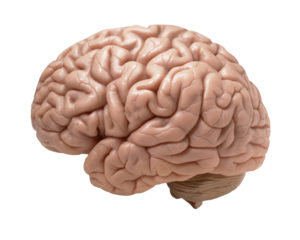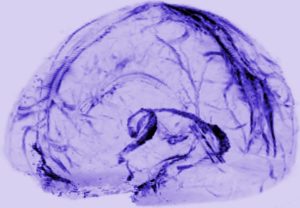 A number of recent studies and articles have discussed the effectiveness of diet in treating or preventing depression with the main conclusion that yes, it helps. Now an observational study (that will be presented in April) found that elderly people following the DASH diet most closely were 11% less likely to become depressed over time than those that did not.
A number of recent studies and articles have discussed the effectiveness of diet in treating or preventing depression with the main conclusion that yes, it helps. Now an observational study (that will be presented in April) found that elderly people following the DASH diet most closely were 11% less likely to become depressed over time than those that did not.
Researchers studying 964 elderly participants over six and a half years found that those who followed the DASH diet, which emphasizes whole grains, fruits, and vegetables, had lower rates of depression, while those who ate a traditional Western diet were more prone to depression. The DASH (Dietary Approaches to Stop Hypertension) diet also emphasizes low sodium (salt) to lower blood pressure, as well as foods rich in nutrients (such as potassium, calcium, and magnesium) that are thought to lower blood pressure.
The study's lead author L. J. Cherian (at Rush Medical Center in Chicago) said that "we need to view food as medicine”. Yes. Eating more fruits and vegetables, whole grains, legumes, seeds, nuts have many health benefits (such as cardiovascular benefits, improving the gut microbes) - a win-win. From Science Daily:
Diet shown to reduce stroke risk may also reduce risk of depression
People who eat vegetables, fruit and whole grains may have lower rates of depression over time, according to a preliminary study that will be presented at the American Academy of Neurology's 70th Annual Meeting in Los Angeles, April 21 to 27, 2018. The study found that people whose diets adhered more closely to the Dietary Approaches to Stop Hypertension (DASH) diet were less likely to develop depression than people who did not closely follow the diet. In addition to fruit and vegetables, the DASH diet recommends fat-free or low-fat dairy products and limits foods that are high in saturated fats and sugar. Studies have shown health benefits such as lowering high blood pressure and bad cholesterol (LDL), along with lowering body weight. ...continue reading "DASH Diet Linked To Lower Rate of Depression"

 The spice turmeric is a very popular supplement nowadays, believed to have all sorts of health benefits due to the curcumin in it (e.g. that it is anticancer, anti-Alzheimer's, anti inflammatory). And yes, studies in the lab (in vitro and in vivo) look very promising. However, a large 2017
The spice turmeric is a very popular supplement nowadays, believed to have all sorts of health benefits due to the curcumin in it (e.g. that it is anticancer, anti-Alzheimer's, anti inflammatory). And yes, studies in the lab (in vitro and in vivo) look very promising. However, a large 2017 

 Interesting
Interesting 
 I can't resist posting excerpts from a recent article announcing that researchers just found an entirely new lymph system ("lymphatic vessels") in the brain that transports fluid in the brain, and is probably "crucial to metabolic and inflammatory processes". The image in this post shows the system in the brain. Amazing that it is only now "discovered" - apparently it was noticed by an anatomist 2 centuries ago, but this was pooh-poohed by modern day physicians. Until now. Excerpts from the Atlantic:
I can't resist posting excerpts from a recent article announcing that researchers just found an entirely new lymph system ("lymphatic vessels") in the brain that transports fluid in the brain, and is probably "crucial to metabolic and inflammatory processes". The image in this post shows the system in the brain. Amazing that it is only now "discovered" - apparently it was noticed by an anatomist 2 centuries ago, but this was pooh-poohed by modern day physicians. Until now. Excerpts from the Atlantic: For years studies have suggested that eating blueberries and other berries is good for our health (
For years studies have suggested that eating blueberries and other berries is good for our health ( Interesting study finding - that both high and low levels of magnesium is associated with a higher risk of dementia. Magnesium is an essential mineral needed for more than
Interesting study finding - that both high and low levels of magnesium is associated with a higher risk of dementia. Magnesium is an essential mineral needed for more than